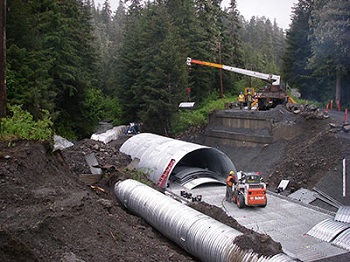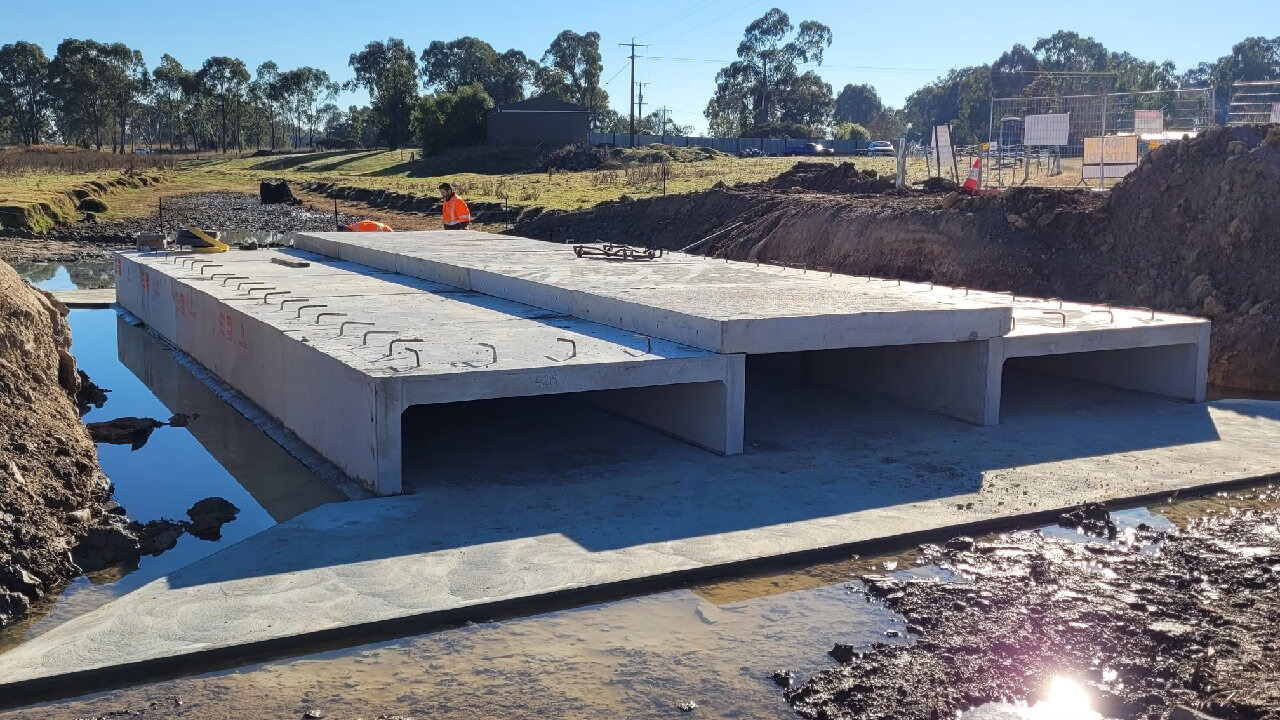Reliable Pad Construction for Your Job Requirements
Reliable Pad Construction for Your Job Requirements
Blog Article
Understanding Culvert Installment: Boost Your Land Drainage Initiatives
Efficient land drain is a critical part of successful agricultural and infrastructure projects. Culverts play a substantial role in taking care of water flow and preventing erosion, making their correct setup essential. From choosing the appropriate products to applying best practices, understanding culvert setup can dramatically enhance the efficiency and durability of your land water drainage system. By comprehending the ins and outs of culvert installment, you can maximize your drainage efforts and guarantee sustainable land use techniques.
Importance of Culvert Installment
Ensuring proper culvert setup is critical for maintaining effective land water drainage systems. Culverts play an important function in managing water flow, avoiding disintegration, and keeping the architectural integrity of roadways, bridges, and other framework. Proper installment of culverts assists to transport water far from roads and structures, decreasing the danger of flooding and water damage. In addition, well-installed culverts aid in stopping debris accumulation, which can lead to clogs and reduced water circulation.
Appropriate Sizing and Positioning

Correct placement of culverts is equally crucial. Culverts need to be placed at the lowest point of the location needing drainage to ensure efficient water circulation.
Material Choice Tips
Picking the ideal materials is paramount in ensuring the longevity and capability of culverts for efficient land drain systems. When selecting products for culvert installation, it is vital to think about variables such as the water circulation rate, soil structure, and environmental problems of the website.
One of the most common materials utilized for culverts is corrugated steel. Concrete culverts are optimal for locations prone to deterioration or when a much longer solution life is preferred.
For ecologically sensitive locations, plastic culverts may be preferred. Plastic culverts are lightweight, resistant to rust, and easy to move and mount. They are likewise known for their smooth inside, which aids to keep efficient water flow. In addition, in areas where all-natural aesthetics are very important, materials like stone or timber can be used to build culverts that mix flawlessly into the environments. Ultimately, the option of material must be based upon an extensive evaluation of the particular needs and conditions of the land drainage task.
Setup Techniques and Best Practices
Provided the essential value of product choice in ensuring the performance and longevity of culverts, the installation techniques and ideal methods play a pivotal function in the overall success of land water drainage systems. Correct installment is key to avoiding issues such as leaks, falls down, or blockages that can endanger the effectiveness of the culvert.

Throughout installation, treatment needs to be required to straighten the culvert appropriately and supply proper assistance to avoid contortion. Backfilling should be done slowly and compacted in layers to avoid voids and settlement. Correct compaction is necessary to stop changing or sinking of the culvert in time.

Upkeep and Long-Term Care
Applying a detailed upkeep plan is vital for making sure the longevity and efficient performance of culverts in land drain systems. Clearing debris such as fallen leaves, branches, and debris is vital to stop blocking and keep the flow capacity of the culvert.
In addition, resolving any kind of problems quickly and making required repair services or replacements can assist protect against costly damages in the future. Regular maintenance jobs may consist of cleansing, fixing joints, enhancing inlet and outlet frameworks, and guaranteeing appropriate incline and placement of the culvert. Maintaining in-depth records of maintenance activities, evaluations, and repairs is crucial for tracking the problem of the culvert in time and planning future maintenance requirements. By remaining positive and carrying out a comprehensive upkeep plan, land drainage systems can run effectively and successfully for several years to come.
Conclusion
In conclusion, mastering culvert installment is critical for effective land drain. By complying with ideal practices and executing lasting treatment techniques, landowners can enhance their drainage initiatives and ensure the longevity and capability of their culverts (Tree Underbrush Clearing removal).
Report this page